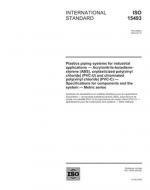|
This section contains 209 words (approx. 1 page at 300 words per page) |
Polystyrene is a high molecular weight polymer made up of repeating monomeric units of styrene. It is a clear, solid plastic that softens at about 185°F (85°C). It is produced through a free radical polymerization reaction of styrene monomers. First produced during the 1930s, polystyrene has become a valuable material with numerous applications for consumer products, packaging, and insulation.
The development of polystyrene began with the discovery in 1839 of styrene. By 1925, German scientists had included styrene in a synthetic rubber. The polymerization reactions which produce polystyrene were developed in 1937 by scientists at the Bakelite Corporation. Today, polystyrene is produced on an industrial scale using a bulk, free radical polymerization process.
Various characteristics make polystyrene a unique and useful material. Polystyrene is clear, easily colored and fabricated. This makes it an excellent material for producing consumer products like toys, housewares, light fixtures, lenses and appliances. It has fair mechanical properties but good resistance to acids and bases. It is also a good electric insulator. Polystyrene can be physically modified into expanded polystyrene which is an ideal packaging and insulation material. Polystyrene can also be chemically modified to produce copolymer resins that have better impact resistance. These materials are useful for making dishes, tumblers, and telephone parts.
|
This section contains 209 words (approx. 1 page at 300 words per page) |


